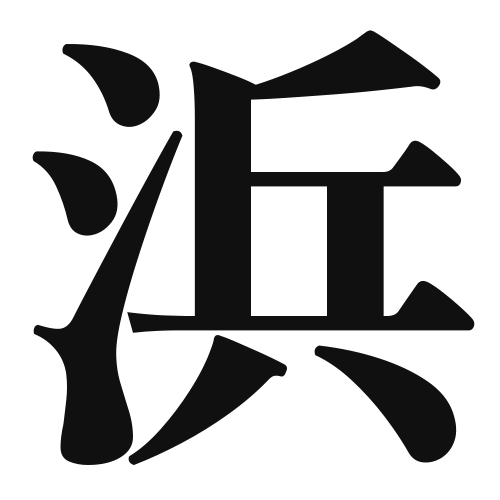1. Overview of Meaning
The kanji “浜” (hama) means “beach” or “shore.” It refers to the area where land meets the sea, often characterized by sand or pebbles.
2. Formation and Radical
The kanji “浜” is a phonetic-ideographic character (形声文字). It combines the radical for “water” (氵) on the left, indicating its relation to water, and the phonetic component “平” (hira), which suggests the sound.
The radical is 氵, which is a variant of the water radical, commonly found in kanji related to water or liquid.
3. Examples of Usage
Common words and phrases that include “浜” are:
- 浜辺 (hamabe) – beach
- 海浜 (kaihin) – coastal area
Example sentence in daily conversation:
「今週末、浜辺に行きたいです。」(I want to go to the beach this weekend.)
4. Synonyms and Antonyms
Similar kanji with related meanings include:
- 岸 (kishi) – bank or shore (more rocky or steep compared to “浜”)
Antonyms include:
- 山 (yama) – mountain (representing high land, opposite of a beach)
5. Cultural and Historical Background
The kanji “浜” is significant in Japanese culture, often associated with leisure and nature. Beaches are popular destinations for relaxation and recreation in Japan.
Proverbs and idioms related to “浜” include:
- 浜の真砂は尽きるとも、世の中の人は尽きまじ (Even if the sands of the beach run out, the people of the world will never cease) – emphasizing the endlessness of human connections.
